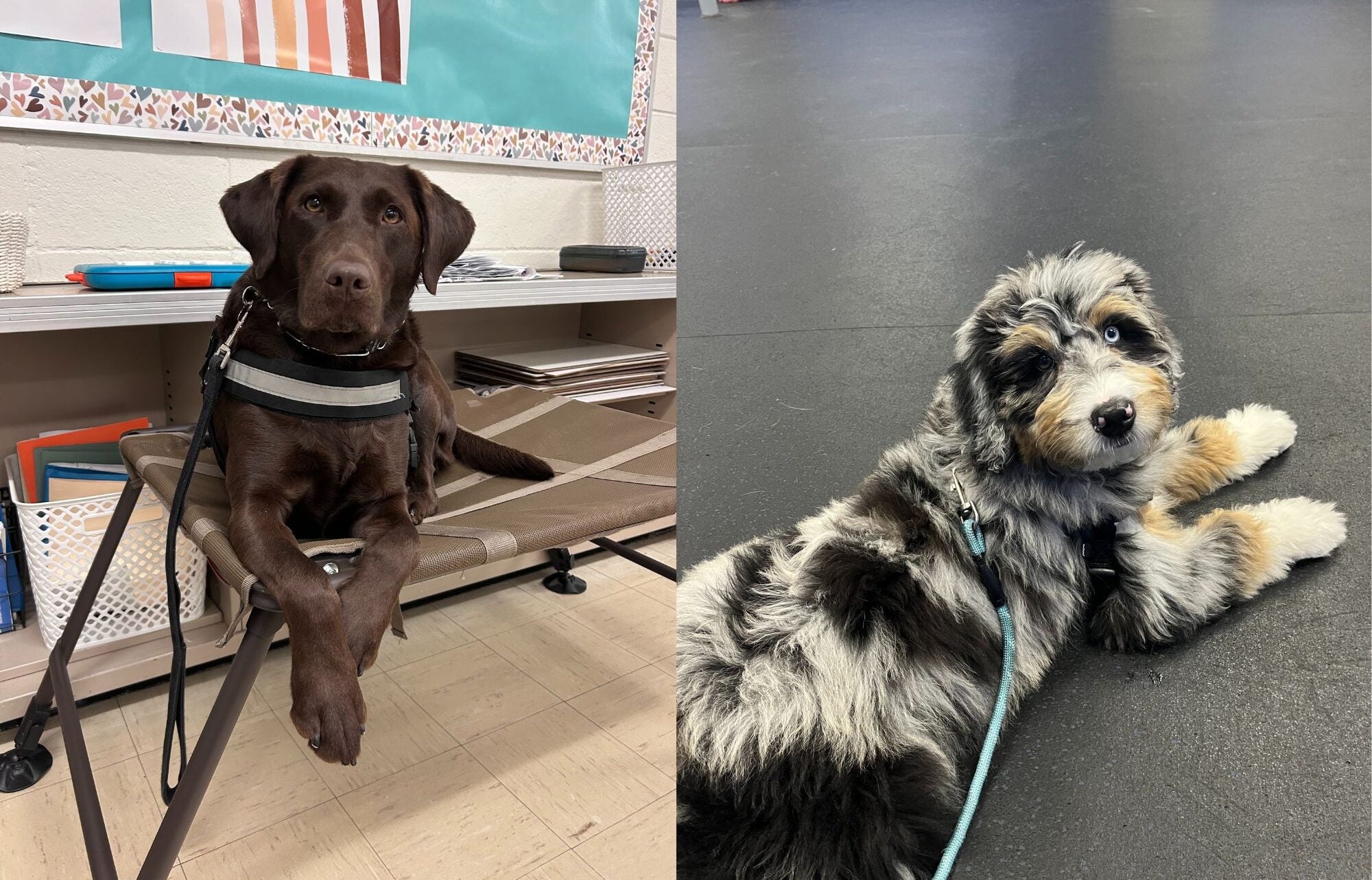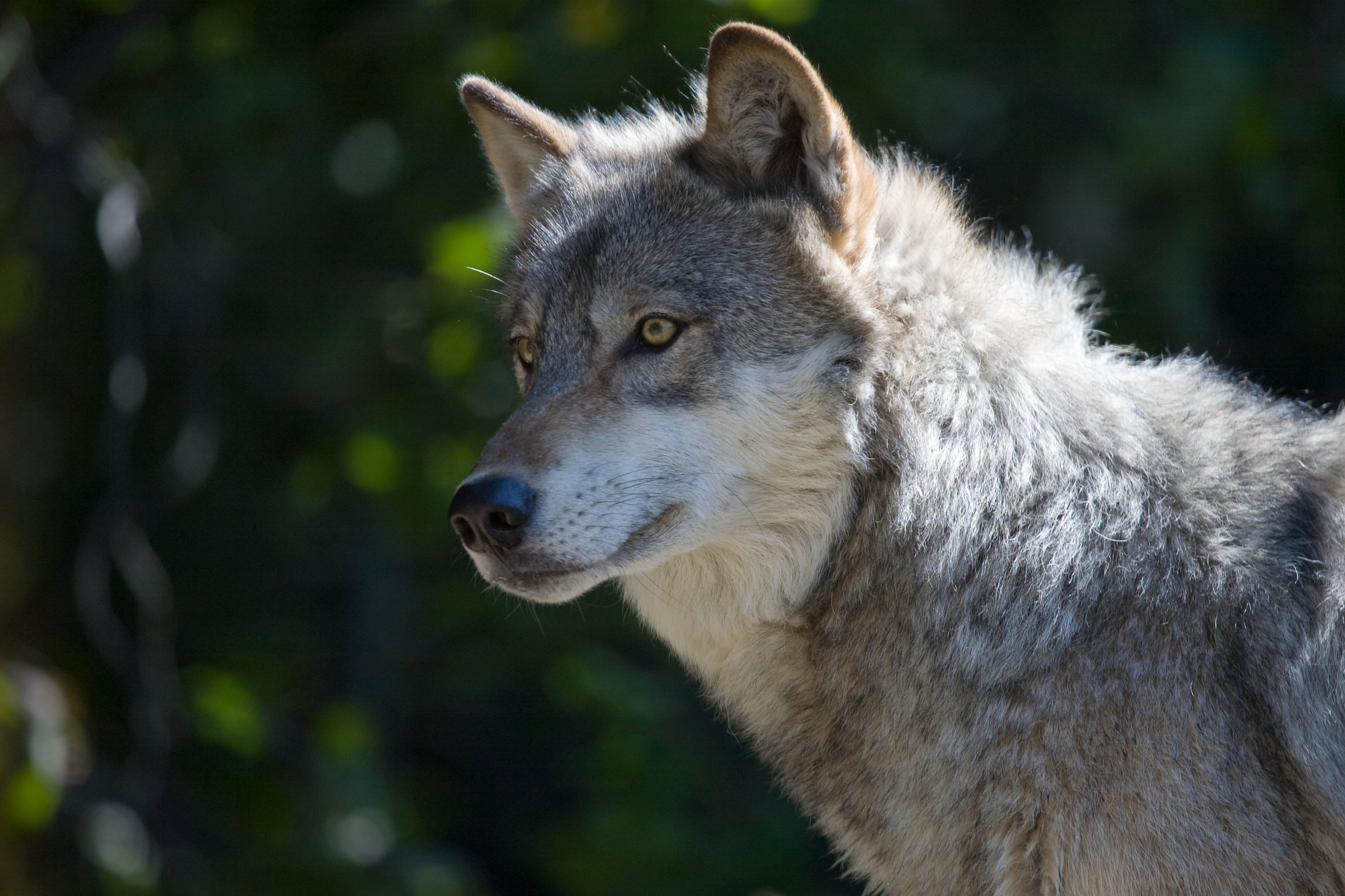Grey wolves have lived in the northern hemisphere for hundreds of thousands of years. They are the living ancestors of today’s beloved domestic dogs.
Wolves and dogs share many similarities. However, there are a few important differences in the ways they interact with humans, said Patricia McConnell, an applied animal behaviorist who’s worked with and studied dogs for more than 25 years.
“It is amazing to have encounters with [wolves],” McConnell said. “I was very lucky in Yellowstone, and we heard a wolf howling to our right. The pack behind us started howling. We got to watch them meet up and greet each other, and it was like a highlight of life.”
Stay informed on the latest news
Sign up for WPR’s email newsletter.
McConnell joined WPR’s “The Larry Meiller Show” to compare and contrast wolves and dogs. The interview was ahead of a presentation she gave with wolf expert Adrian Wydeven for Wisconsin’s Green Fire.
The following interview has been edited for brevity and clarity.
Larry Meiller: I was in the Chequamegon National Forest one morning before light. I was walking into the woods and a wolf howled and another one answered. I just sat down and listened.
Patricia McConnell: Oh, that sounds heavenly. You know, it really is fascinating that wolves are so much like dogs. They’re super playful as adults, which is very rare in the mammalian world.
Wolves are uber-social. We humans will take care of the young of others, but some female wolves will actually start producing milk for the young of others.
They live in packs, as we all know. They strategize together. They hunt socially, unlike other animals. Cats can be very social sometimes, but they always hunt as a solitary unit.
Wolves and dogs are so similar, and if they’re so similar, then why? I went into a wolf pen at Wolf Park [in Indiana]. There’s actually a picture of me sitting beside a wolf named Ayla. We’re both looking at the camera. I’m in complete rapture. I’m like, “I’m in a pen with a wolf, I’m so excited.” I was just like a 5-year-old idiot.

LM: I looked at that picture on your blog.
PM: A friend of mine saw it and was a little worried I was sitting next to a wolf. Wolves and dogs have more than 99 percent of shared genetic material and so much of their behavior is the same. Why was my friend worried about me sitting beside a wolf?
I’m opposed to this, but as an example: If I had a wolf living in my house, I could cuddle on the couch with that wolf. But never in a million years would I invite you, Larry, to come and cuddle on the couch with my wolf.
Whereas, if you did come to my house, my dog would be on you in a minute. He’d lean his cheek against your cheek. One of the biggest differences between wolves and dogs is their behavior around strangers.
One of the coolest pieces of research that I know of that’s come out in the last couple of years was done by [Bridgett] Vonholdt and [Monique] Udell. They were really curious about the huge difference between dogs’ and wolves’ reactions to strangers.
They studied their genetics and looked at particular sites of the genes on chromosome seven. In humans, we know that variations or mutations within that particular chromosome lead to something called Williams-Beuren syndrome.
One of the most obvious effects of Williams-Beuren syndrome is that it creates this hyper-social young child who loves everybody, with no boundaries and no shyness at all.
That syndrome and those genetic changes are found in high amounts in domestic dogs and not in wolves. Additionally, we know that you can breed for docility based on the research of [Dmitri] Belyaev and Lyudmila Trut on fur foxes. So those are some of the reasons why you don’t want to invite a stranger right into your wolf pen without being very thoughtful about it.
LM: What is it about dogs versus wolves when it comes to eye contact?
PM: I love that you brought that one up because that’s one of my favorite differences between dogs and wolves.
So first of all, we all know eye contact is a hugely important part of our social relationships. Between friends or family members, direct eye contact is a really important way of maintaining social bonds. There’s been a lot of new research comparing the behavior of dogs and wolves, and this is just one of them.
It turns out, first of all, that dogs establish eye contact with people at a much younger age than wolves, at 5 weeks old.
They also tend to keep eye contact, so there are long periods of what’s called mutual gazing. We all know what that means, right? You’re in love with somebody, and you just look at each other’s eyes.
Researchers also found that people who spend a lot of time with this mutual gaze, looking into their dog’s eyes and vice versa, have increased levels of oxytocin. And so do their dogs.
But, that’s not the case for wolves. Before I went into Ayla’s pen, I watched an hour-long show on what to do and what not to do. Then, I went into the pen with a highly trained caretaker and wolf handler.
I was told: “Do not look her in the eye.”


